He was one of the most talented painters to ever walk the earth, and in this post, you’ll discover the ultimate list of facts about Raphael.
He was also one of the most prolific painters of his time, and we have created a list of the most famous paintings by Raphael.
1. This is Raphael’s full name
Raphael was an Italian artist born in the year 1483. It’s not exactly known when his birthday exactly was. One version claims it was on March 28, and another version claims it was on Good Friday, April 6 of that year.
What we do know is where he was born. It was tradition back then to mention the place of birth in the name, so Raphael’s full name was Raffaello Sanzio da Urbino. This means he was born in a village named “Urbino,” a walled city in the Marche region of Italy, southwest of Pesaro in the east of Italy.
One of the most interesting facts about Raphael is that he signed documents with the name “Raphael Urbinas.”
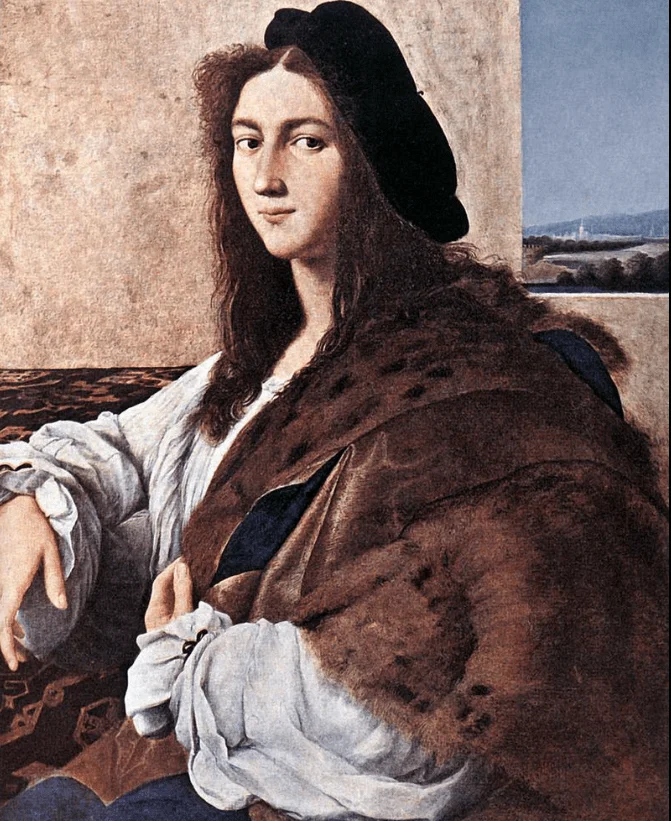
2. He’s 1 of 3 great masters of his time
The late 15th and early 16th centuries were amazing periods when it comes to fine art. The High Renaissance saw the emergence of some of the most prominent artists, who remarkably lived and worked in the same areas as well.
Apart from Raphael, Michelangelo (known for “The Creation of Adam” and “the Pietà” and several more famous works) and Leonardo da Vinci (known for the “Mona Lisa” and “The Last Supper“) were also creating one masterpiece after another back then, and they are considered to be the traditional trinity of great masters of that period.
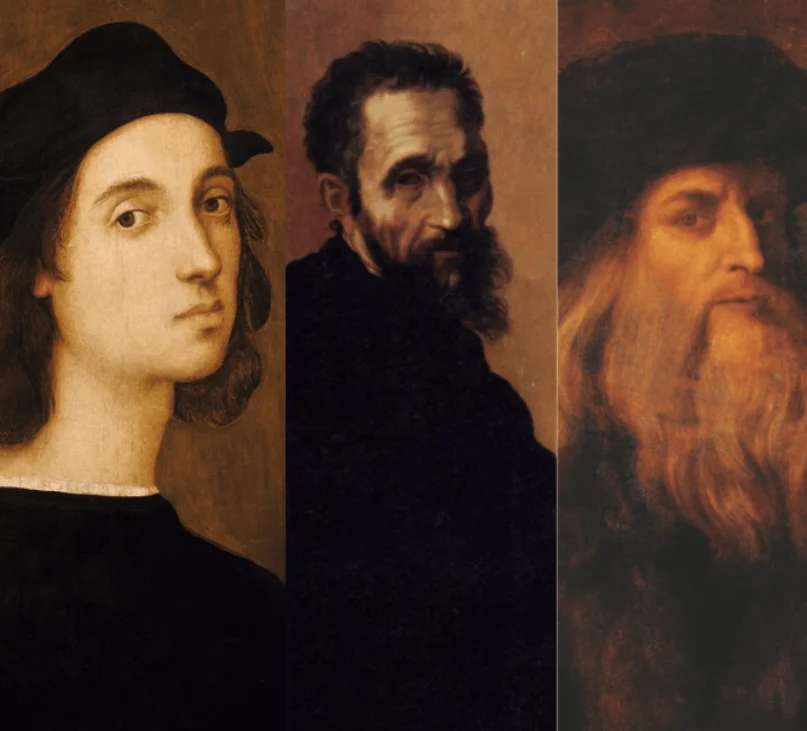
3. His father was a painter as well
You know the saying about the apple and the tree, right? Well, this saying applies to Raphael. His father was also a renowned painter who worked as the court painter to Duke of Urbino Federico da Montefeltro.
His work consisted of several altarpieces, several Madonnas, an annunciation, and a painting of the resurrected Christ supported by two angels. Many pieces can be found in museums all across Europe such as the Berlin Museum, the National Gallery in London, and the Museum of Fine Arts in Budapest.

Unfortunately for the young Raphael, both his mother (at the age of 8) and father (at the age of 11) died before he had reached adolescence.
In Raphael’s biography, Giorgio Vasari mentioned that Raphael had already “shown talent at a young age” and that he was “very helpful to his father when he painted.”
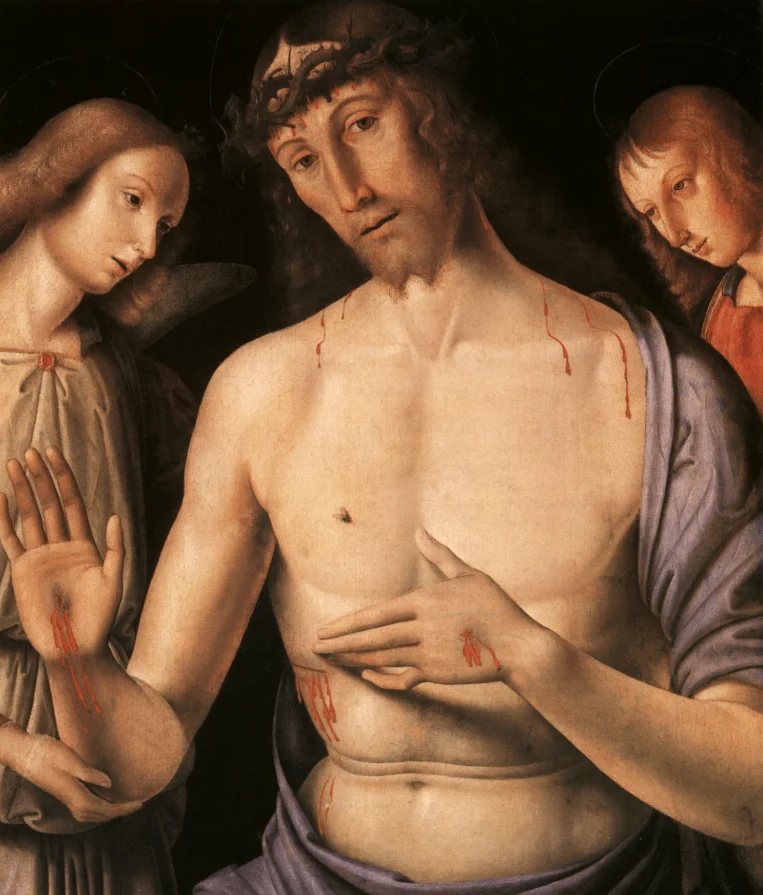
4. He painted his main mistress
Raphael had an outgoing and enjoyable personality. He didn’t just use this trait to acquire commissions at the cost of his rivals by being able to befriend Popes, but also (more than once) to seduce women who were captivated by his immense talent.
One of those women became his main lover in life (even though he still had many others) and was named “Margherita Luti,” the daughter of a baker. Because of this, she was referred to as “La Fornarina,” or the “Baker’s (Fornaro) daughter.”
Because she posed as his model, their love affair became the “archetypal artist-model relationship of the Western tradition.”
Despite being depicted in at least 2 of his paintings, little is known of the Fornarina’s life, except that her home was in the Via del Governo Vecchio in Rome.
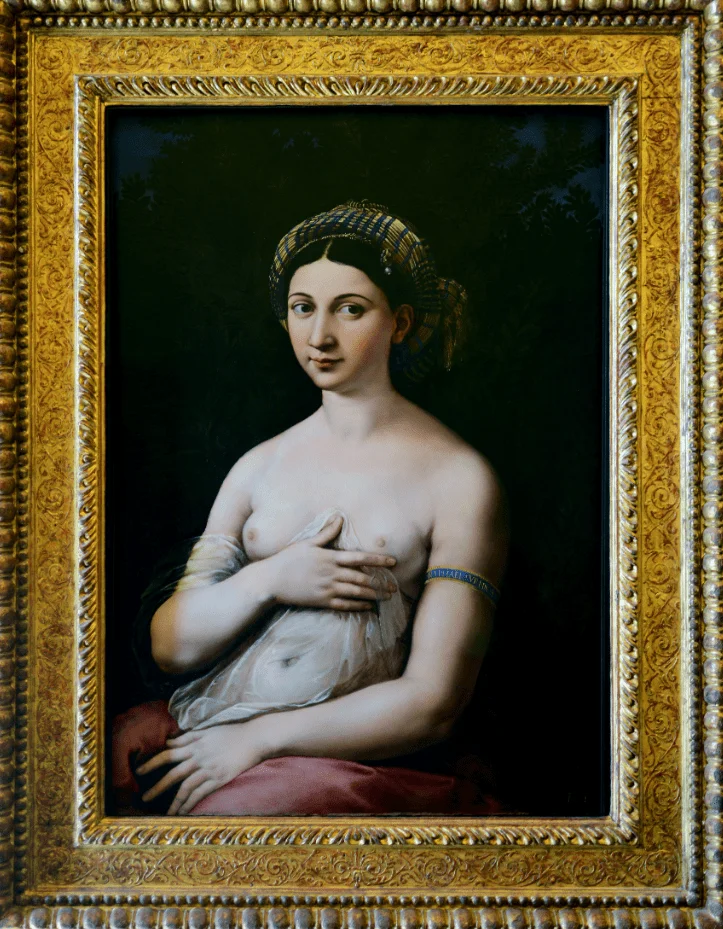
5. Raphael actually got engaged
Being friendly and outgoing had many benefits for Raphael, especially when it came to attracting commissions and seducing women.
Once upon a time, he experienced a less enjoyable moment though. Cardinal Medici Bibbiena, one of those influential guys that he befriended, must have felt sorry for the ultra-amicable, yet still single Raphael. So sorry that he offered him a helping hand.
In 1514, he couldn’t refuse the Cardinal’s offer to become engaged with his niece, Maria Bibbiena.
It’s clear that he preferred to stay single and enjoy the good life rather than to get married to a girl he wasn’t even remotely interested in. So even though he became engaged, the marriage never actually happened.
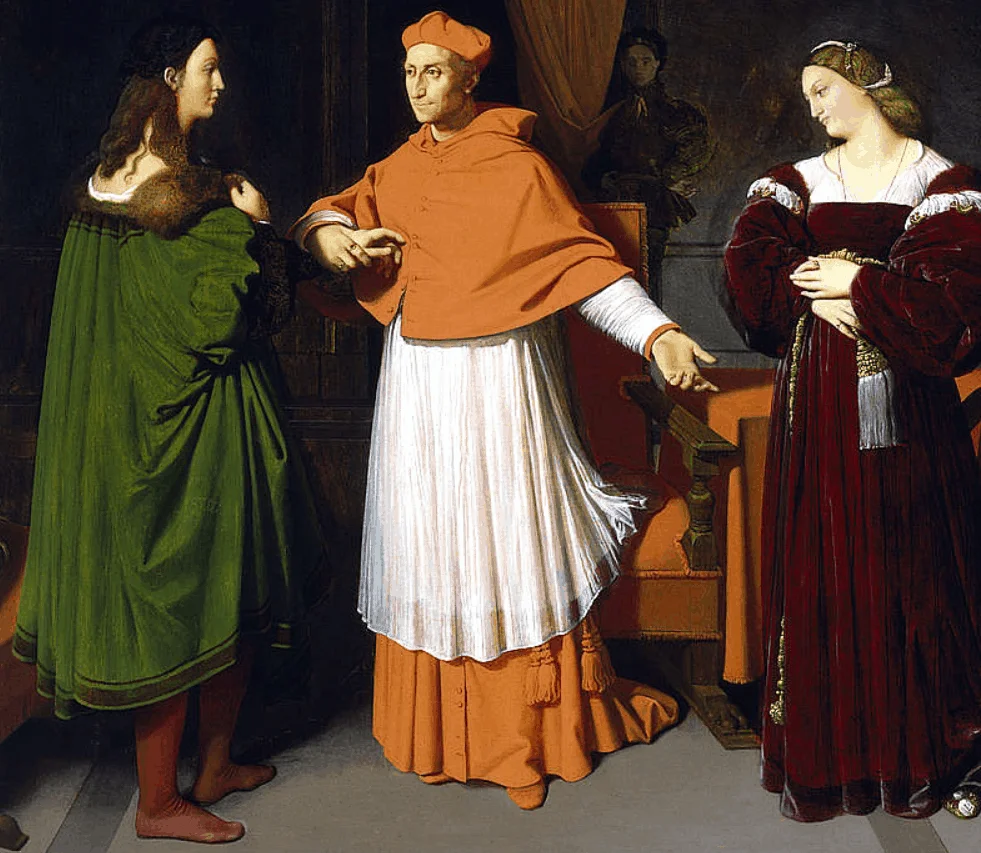
6. His most famous work was a fresco
Raphael was a real workhorse. Unlike, for example, his rival Leonardo da Vinci, who moved forward very slowly and was prone to procrastinating, Raphael moved forward very fast. This resulted in a huge collection of art of the highest quality.
His most famous work consists of multiple frescoes painted on the walls of the reception rooms of the Papal Palace, referred to as the “Raphael Rooms” or the “Stanze.” These can now be admired in the Vatican Museum (a virtual tour can be found here).
In one of these rooms, the “Stanza della Segnatura,” Raphael created one of the most famous works of art ever created, “The School of Athens,” a painting described as “the embodiment of the classical spirit of the Renaissance.”
7. There was a lot of rivalry going on in Rome
With 3 of the best painters in history working together in the same area in Rome, while fighting to get the best commissions, there’s bound to be some fireworks.
And there were. Michelangelo, who was just 8 years the senior to Raphael, instantly disliked the young and popular painter in town. This didn’t help when he instantly got the commission for the Pope’s reception rooms, which would eventually be called the “Raphael Rooms.”
There’s also the story about Raphael, together with Bramante (the architect of St. Peter’s Basilica), urging Pope Julius II to give Michelangelo the commission of the Sistine Chapel ceiling, which he did. After all, painting a ceiling isn’t too comfy and Michelangelo was known as a sculptor, not a painter.
The plot was to ensure he got a job doing something he wasn’t good at which would result in his career being damaged.
Eventually, the plan backfired because Michelangelo did an amazing job in the Sistine Chapel and it was Raphael (let into the chapel secretly by Bramante) who got inspiration from his colleague, something Michelangelo would in return use against him after he passed away.
Oh these guys, they had plenty of fun back then!

8. Raphael included his rivals in the School of Athens
By the time Raphael was finished with his work on the “Stanze,” Michelangelo found a way to accuse him of plagiarism, something he continued to do after his death.
It must have come as a shock, but Michelangelo recognized not only his style but also himself in the “School of Athens” painting, in which it’s believed that Michelangelo represents Heraclitus.
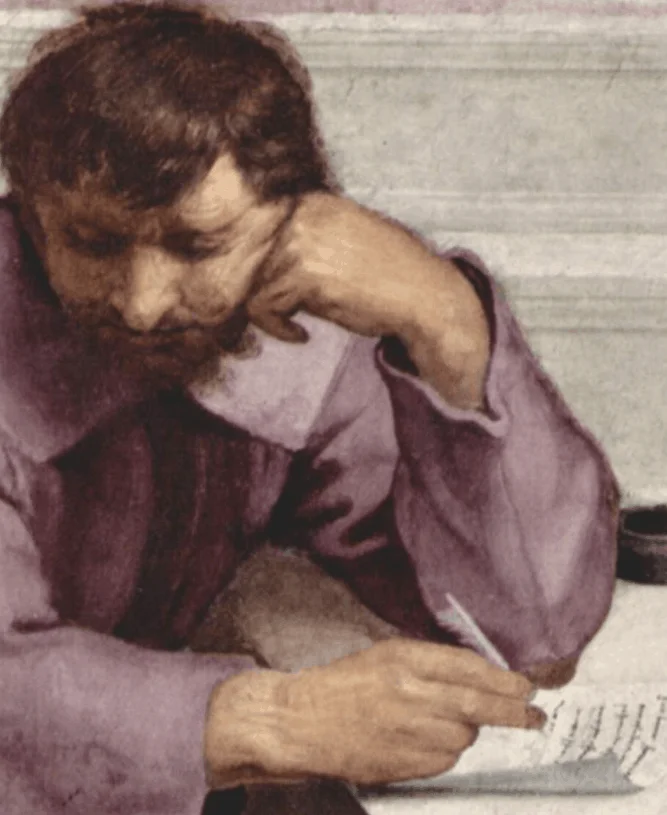
As you can see, it wasn’t a very flattering depiction which was perhaps the main reason for the accusations.
What probably enraged Michelangelo further is that he depicted his other rival, Leonardo da Vinci, as one of the main characters, namely Plato.
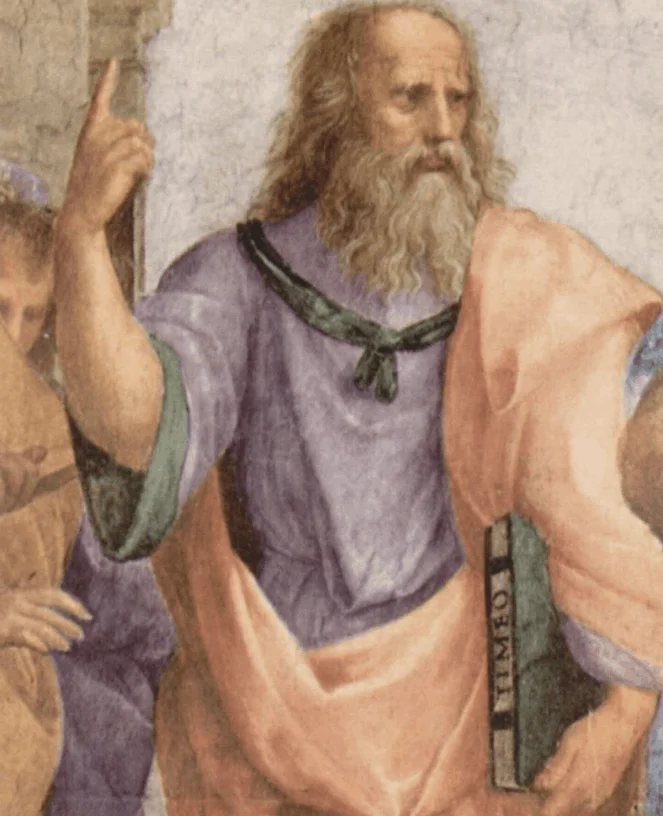
9. He also included himself
As a goof, Raphael also included an image of himself as who is believed to represent “Apelles of Kos,” one of the most famous painters of Ancient Greece who lived in the 4th century B.C.
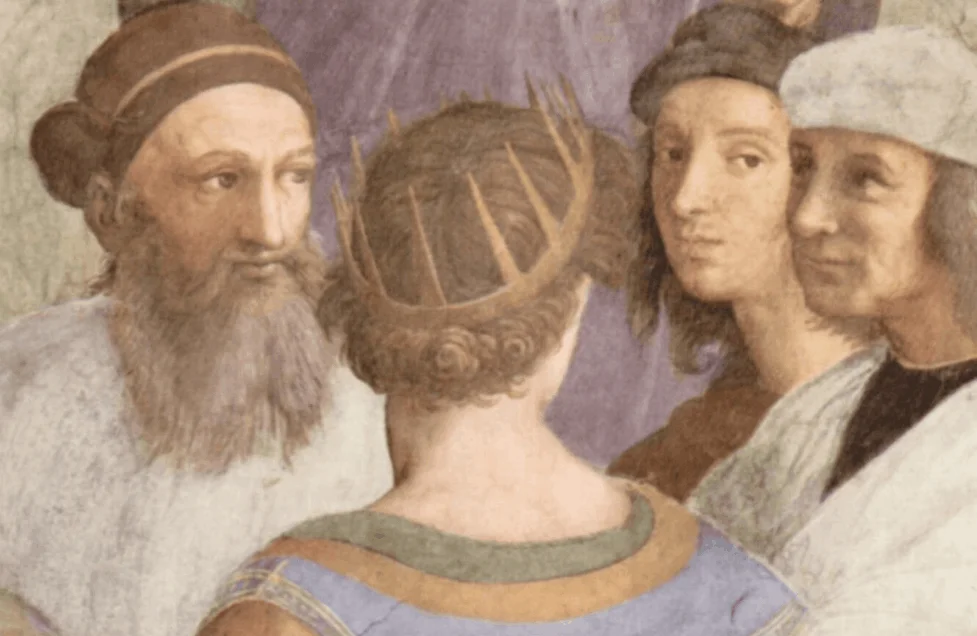
Why not include yourself with some of the most prominent thinkers and artists in history, right?
10. He died because he was too active in the bedroom
At least, that’s the version of his biographer, Georgio Vasari. According to him, Raphael died because he was so tired from all his work, and more importantly, from having too much sex with his mistress, La Fornarina.
Whether or not he was exhausted from never-ending lovemaking, we’ll never know for sure. What we do know is that he suddenly became ill at the age of 37 and was bedridden for 15 days.
In these 15 days, he was able to confess his sins, dictate his will, and receive his final rites. He died on Good Friday, April 6, 1520.
One of the most peculiar facts about Raphael is that he died on Good Friday, which is also believed to have been his birthday. It was his 37th.
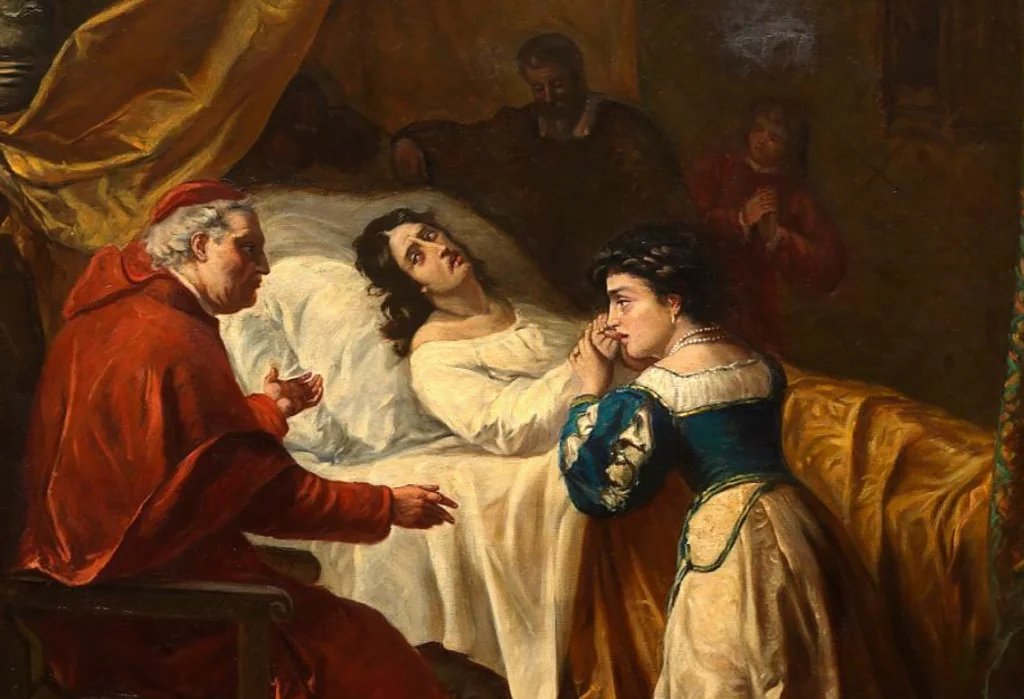
11. He’s buried together with his financée in the Pantheon
His funeral was done in style. It was a huge event, witnessed by large crowds of mourning people. After all, Raphael had the status of a celebrity in the early 16th century.
His body was carried by 4 Cardinals who were dressed in purple and the Pope gave his hands a final kiss. His marble sarcophagus has an inscription that reads:
Here lies that famous Raphael by whom Nature feared to be conquered while he lived, and when he was dying, feared herself to die.
Inscription is Raphael’s sarcophagus.
His final wish was to be buried in one of Rome’s most famous buildings, the Pantheon, a Roman temple that was converted into a Catholic church.
Another one of those peculiar facts about Raphael is that he is buried together with his financée whom he never wanted to marry, Maria Bibbiena, who remarkably died the same year as Raphael in 1520.
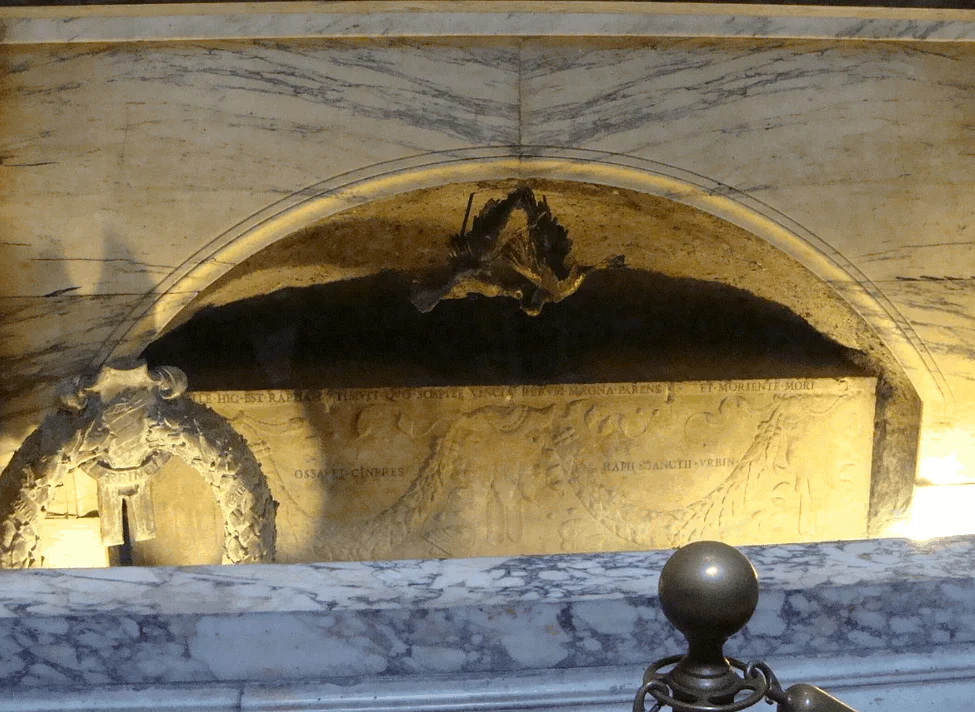
12. Did Raphael die because of this?
Scientists have claimed recently that they have uncovered the truth about Raphael’s death. It’s not as sensational as the claim that excessive lovemaking was the cause of his demise, but it does have something to do with it.
Researchers at the University of Milan-Bicocca claim that Raphael died because he didn’t mention his affair with his mistress and the fact that he was roaming around in the cold streets of Rome at night because of it. After all, he died in early April after being bedridden for about 2 weeks so it was pretty cold in Rome back then.
The scientists conclude that he died because of a fever caused by an infection, more specifically pneumonia. Since the doctors wanted to cure his fever by a procedure referred to as bloodletting, they actually made things worse as Raphael became weaker to fight the contagious infection.
A pretty plausible theory that makes his death even more tragic!


Leave a comment
You must be logged in to post a comment.